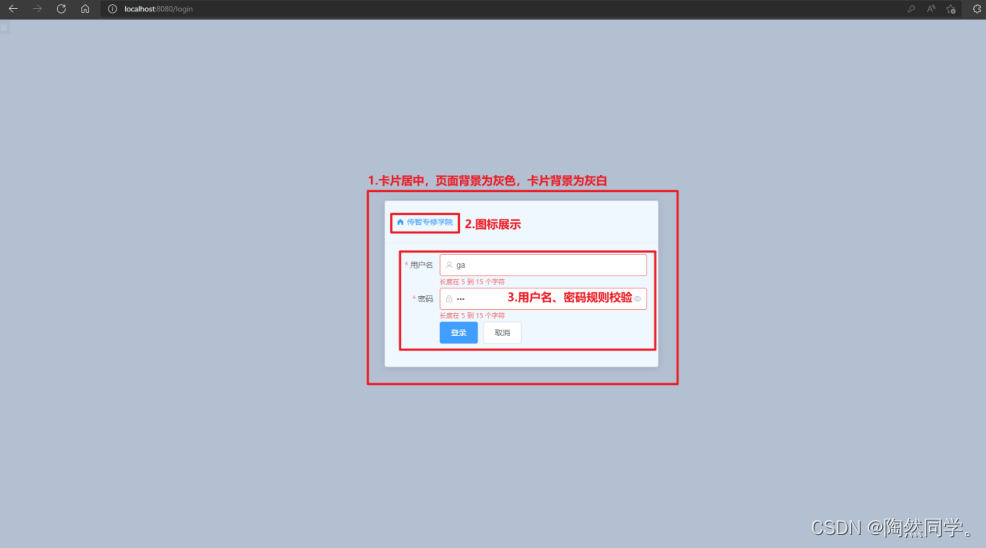简介
Ruby是一种动态编程语言,可用于编写简单脚本、游戏和Web应用程序。它于1993年首次在日本发布,在2005年作为服务器端Web开发的语言获得了普及。Ruby旨在为初学者提供易用和有趣的功能。对于初学者,甚至经验丰富的开发人员来说,这是一个很好的选择。
虽然我们有很多方法可以在Ubuntu上安装Ruby,但最简单的方法是使用 RVM,Ruby Version Manager。
在本教程中,您将通过命令行在本地Linux机器上设置Ruby编程环境。然后,您将通过编写一个简单的Ruby程序来测试您的环境。
本教程将详细介绍Ubuntu 16.04的安装过程。
准备
您将需要一台安装了Ubuntu 16.04的计算机,并且具有该计算机的管理访问权限。没有服务器的同学可以在这个页面购买。
第一步、学会使用终端
使用命令行来安装Ruby。命令行是与计算机交互的非图形方式。命令行(也称为shell)允许您自动执行多种任务,是软件开发人员必不可少的工具。
在Windows服务器上,你可以通过ssh工具连接到腾讯云服务器上,相关文档详见这里:https://cloud.tencent.com/document/product/213/5436

现在让我们安装RVM,我们将使用它来安装Ruby及其所有必要组件。
第二步、安装RVM和Ruby
RVM将自动完成在Ubuntu系统上设置Ruby环境的过程。使用RVM安装Ruby的最快方法是运行RVM网站上托管的安装脚本。
首先,使用gpg命令联系公钥服务器并请求RVM项目的密钥,该密钥用于对每个RVM版本进行签名。这使您可以验证要下载的RVM版本的合法性。执行以下命令:
gpg --keyserver hkp://keys.gnupg.net --recv-keys 409B6B1796C275462A1703113804BB82D39DC0E3 7D2BAF1CF37B13E2069D6956105BD0E739499BDB我们将用curl下载RVM安装脚本。
sudo apt-get install curl接下来将提示您输入密码以安装程序。但是,当您键入密码时,您的密码将不会显示在"终端"窗口中。这是一种安全措施,因此在您输入密码后按ENTER键,程序将会自行安装。
接下来,使用curl命令从项目的网站下载RVM安装脚本。命令前面的反斜杠可以确保我们使用常规curl命令而不是已更改的版本。
\curl -sSL https://get.rvm.io -o rvm.sh让我们来看看与curl命令相关的知识:
- 该
-s或-silent可以消除curl状态,不显示进度条。 -S或-show-error命令可以让curl显示错误消息。-L或-location标志会告诉curl处理重定向。如果服务器报告所请求的页面已移动到其他位置,则它将使用新位置再次自动执行请求。
下载后,如果要在应用脚本之前审核脚本内容,请运行:
less rvm.sh使用箭头键滚动文件。使用q键退出并返回到提示界面。
若脚本的内容无误,请执行此命令以安装最新的RVM稳定版本:
cat rvm.sh | bash -s stable该脚本会在您的主目录中创建一个名为.rvm的新目录。这是安装Ruby所有相关组件。安装过程会修改您的.bashrc文件以及文件夹.rvm/bin添加到您的环境变量PATH中,以便您可以轻松地运行rvm命令。
但是,在当前会话中将无法访问rvm命令。所以我们执行此命令来解决这个问题:
source ~/.rvm/scripts/rvm现在使用rvm命令安装最新版本的Ruby:
rvm install ruby --default此过程将下载并安装Ruby及其组件,并使此版本的Ruby成为系统的默认版本。
如果您缺少一些重要的先决条件,安装程序将获取这些先决条件并进行安装。它可能会要求您提供密码。
Searching for binary rubies, this might take some time.
Found remote file https://rvm_io.global.ssl.fastly.net/binaries/ubuntu/16.04/x86_64/ruby-2.4.0.tar.bz2
Checking requirements for ubuntu.
Installing requirements for ubuntu.
Updating system....
Installing required packages: gawk, libssl-dev, zlib1g-dev, libyaml-dev, libsqlite3-dev, sqlite3, autoconf, libgmp-dev, libgdbm-dev, libncurses5-dev, automake, libtool, bison, libffi-dev, libgmp-dev, libreadline6-dev..................
Requirements installation successful.满足先决条件后,RVM将下载并安装Ruby:
ruby-2.4.0 - #configure
ruby-2.4.0 - #download
% Total % Received % Xferd Average Speed Time Time Time Current
Dload Upload Total Spent Left Speed
100 16.4M 100 16.4M 0 0 4828k 0 0:00:03 0:00:03 --:--:-- 4829k
ruby-2.4.0 - #validate archive
ruby-2.4.0 - #extract
ruby-2.4.0 - #validate binary
ruby-2.4.0 - #setup
ruby-2.4.0 - #gemset created /home/brian/.rvm/gems/ruby-2.4.0@global
ruby-2.4.0 - #importing gemset /home/brian/.rvm/gemsets/global.gems..............................
ruby-2.4.0 - #generating global wrappers........
ruby-2.4.0 - #gemset created /home/brian/.rvm/gems/ruby-2.4.0
ruby-2.4.0 - #importing gemsetfile /home/brian/.rvm/gemsets/default.gems evaluated to empty gem list
ruby-2.4.0 - #generating default wrappers........脚本完成后,程序将安装最新版本的Ruby。
除了Ruby之外,RVM还安装了一些相关工具,包括交互式Ruby控制台irb,一个可以运行自动化脚本的程序rake和可以轻松安装和更新您项目中使用的Ruby库gem。
要检查已安装的Ruby版本,请键入以下命令:
ruby -v 这将输出特定版本的Ruby:
ruby 2.4.0p0 (2016-12-24 revision 57164) [x86_64-linux]在我们开始使用Ruby之前,让我们再对系统进行一次修改。为了让RVM在您打开新的终端窗口时自动使用其版本的Ruby,您的终端必须打开并登录shell,因为RVM会修改.bash\_profile文件,而该文件只能在登录shell时调用。在Ubuntu上,默认终端会打开一个交互式shell,但是不会调用此文件。要更改此 选项 ,请选择终端中的 编辑 菜单,选择 配置文件首选项 ,选择 命令 选项卡,然后选中 运行命令 旁边的框 作为登录shell 。如果您觉得这项操作有些繁琐,您也可以在每次启动新的终端会话时运行source ~/.rvm/scripts/rvm命令以达到相同效果。
现在您已经安装了Ruby,接下来让我们编写一个程序。
第三步、创建一个简单的程序
让我们创建一个简单的Hello,World程序。这将确保我们的环境能正常工作,并让您轻松创建和运行Ruby程序。
为此,请使用nano创建一个名为hello.rb的新文件:
nano hello.rb在编辑器中键入以下程序:
puts "Hello, World!"按下CTRL+X退出编辑器。出现提示时按Y,保存文件。
现在运行程序:
ruby hello.rb程序将执行并将其输出显示在屏幕上:
Hello, World!只要输出Hello, World!证明您有一个可用的开发环境。您可以使用此环境继续探索Ruby并构建更强大,更有趣的项目。快购买一台服务器尝试,或试用腾讯云开发者实验室搭建环境 。
参考文献:《How To Install Ruby and Set Up a Local Programming Environment on Ubuntu 16.04》
原创声明:本文系作者授权腾讯云开发者社区发表,未经许可,不得转载。
如有侵权,请联系 cloudcommunity@tencent.com 删除。
原创声明:本文系作者授权腾讯云开发者社区发表,未经许可,不得转载。
如有侵权,请联系 cloudcommunity@tencent.com 删除。










![[编程经验] 拉勾网爬虫数据的后续处理](https://ask.qcloudimg.com/http-save/yehe-1622570/k5jxgbmdfu.png)




